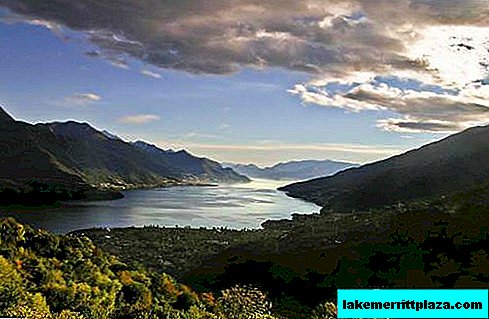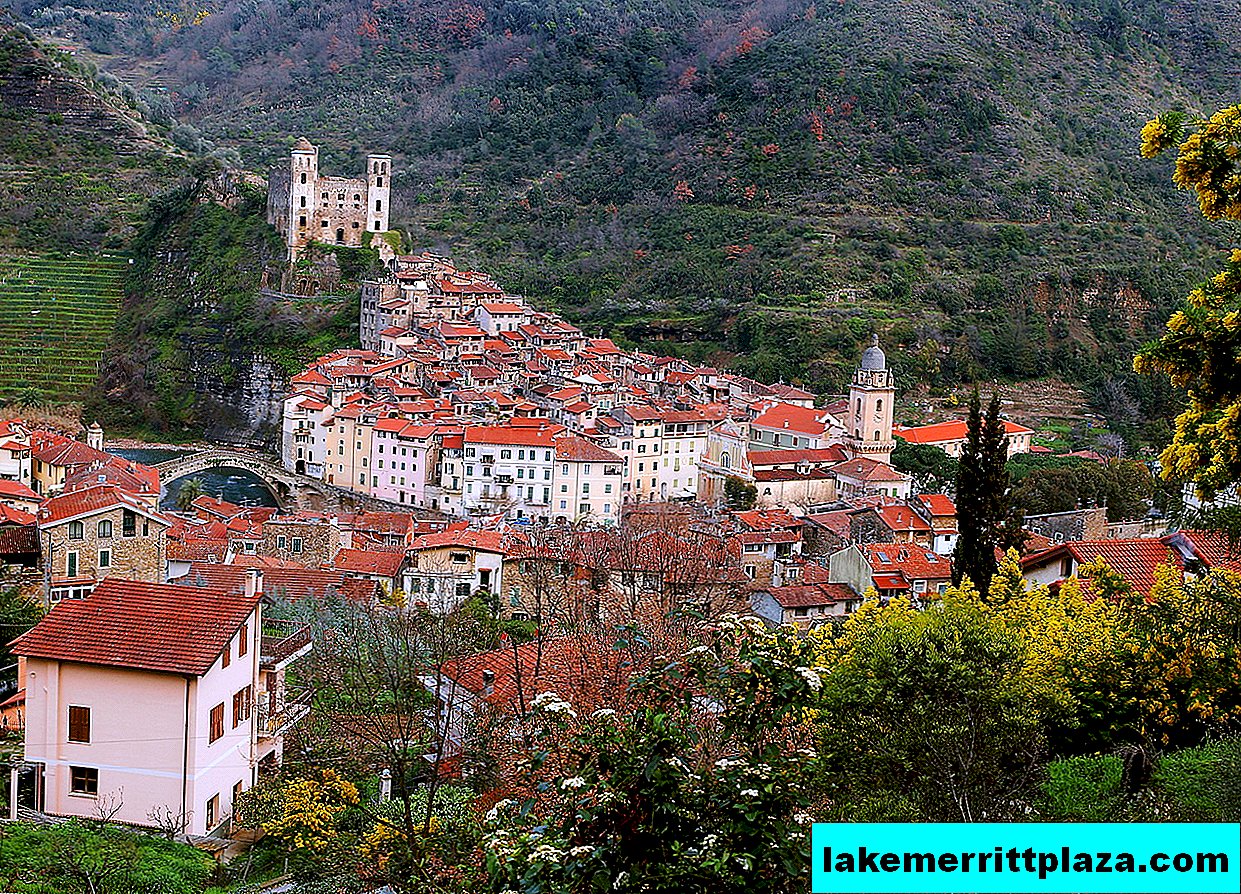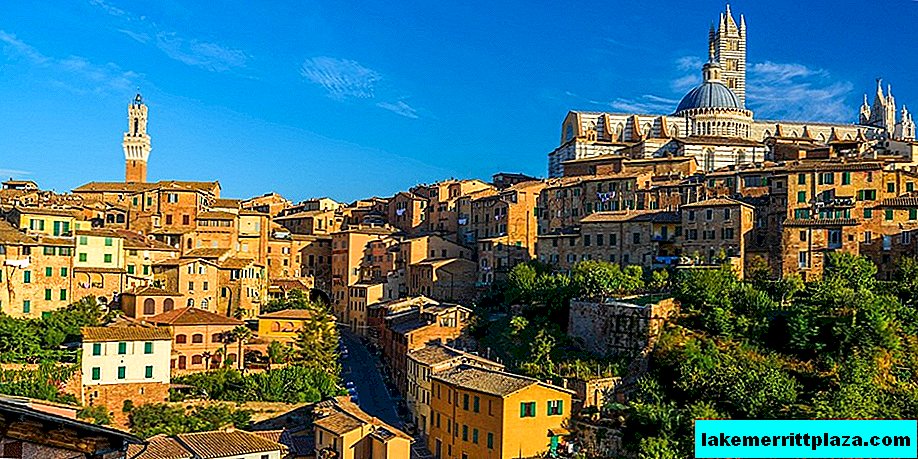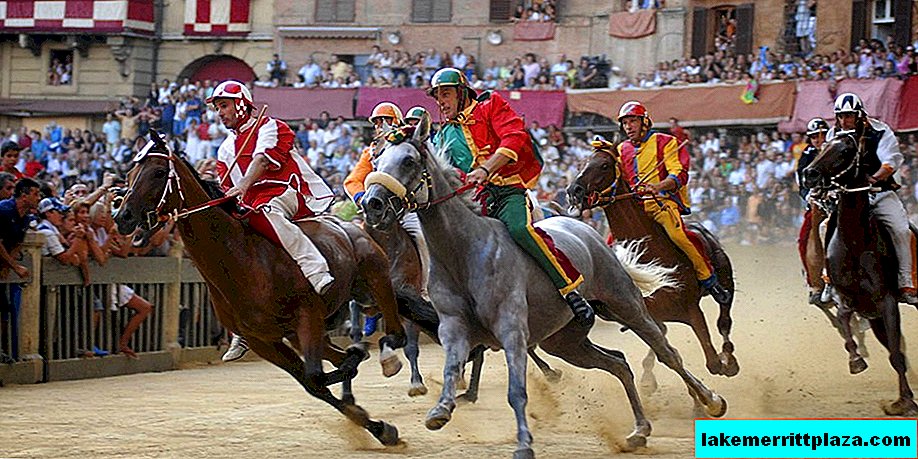Santa Maria in Aracheli is a beautiful basilica on Capitol Hill. A grand staircase leads to it, created as a sign of Rome's deliverance from the plague. The church was built in the VI century on the site of the Temple of Juno, the same one in which the geese who saved Rome from the Gauls lived. And that's not it! Michelangelo and Donatello, columns from old (pre-Christian) temples of Rome and ... much more!
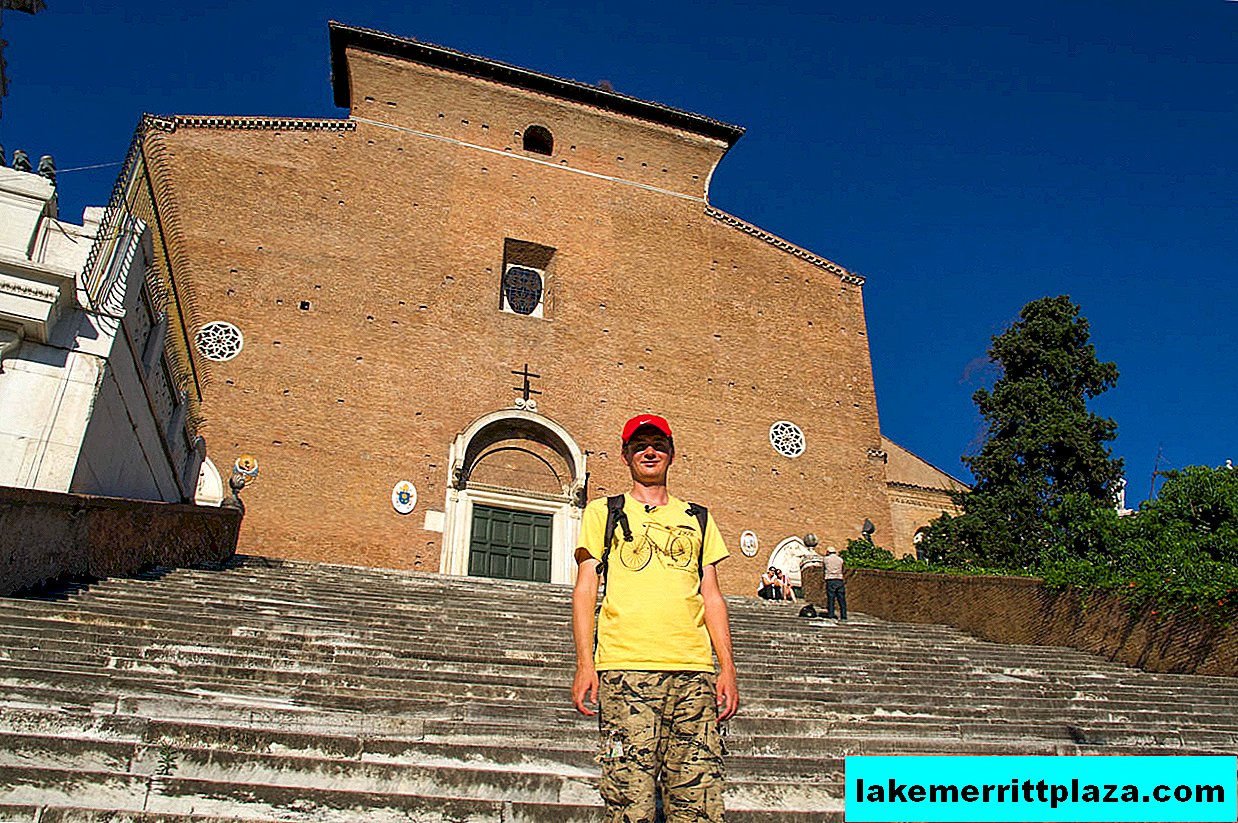
Basilica of Santa Maria in Aracheli - church of St. Mary of the Altar of Heaven
The Basilica of Santa Maria in Aracheli (Basilica di Santa Maria in Aracoeli) is located on the Capitol, on the very top of the hill, near the Palazzo Senatori. This is the oldest Christian basilica in Rome - the Church of St. Mary of the Altar of Heaven.
A bit of history
In the 9th century, this basilica was built by the Benedictines. The temple appeared on the site of the Byzantine abbey, which existed since the VI century. The ruins of the ancient Roman temple of Juno served as the foundation of the building. At first, the church bore the name Santa Maria in Capitolio, a new name appeared only in the XIV century.
At the end of the XIII century, the temple was transferred to the Franciscan order. Reconstruction was carried out by the architect Arnolfo di Cambio. Since that time, the building has acquired a Roman-Gothic appearance.
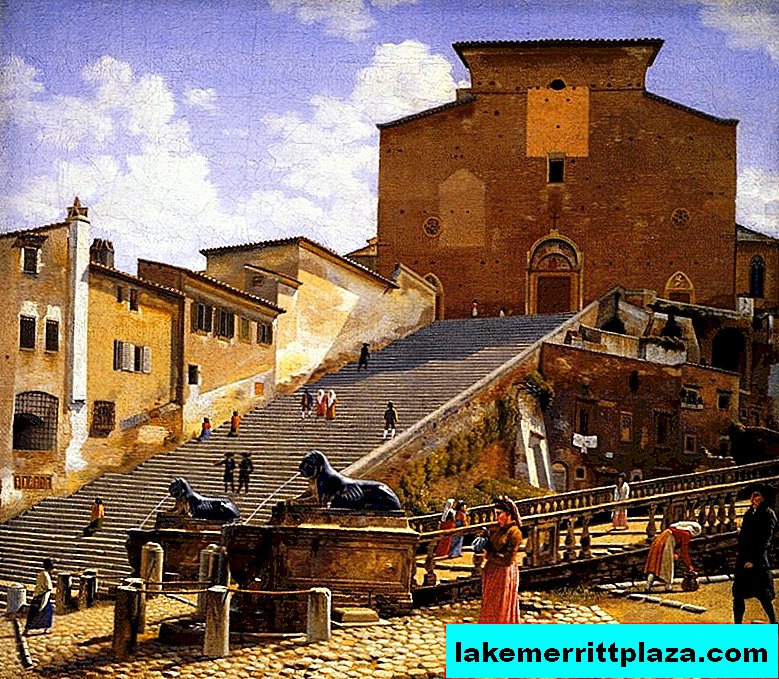
“Marble Steps Leading to Santa Maria in Aracheli in Rome”, Christoffer Wilhelm 1813-1816, photo by RasMarley
The basilica in the Middle Ages was the center of the religious and secular life of Rome. In 1348, the architect Lorenzo Simone Andreozzi erected a monumental staircase to the temple. The construction of a high staircase, consisting of 124 steps, was dedicated to the liberation of Rome from the plague epidemic.
Architecture and interior
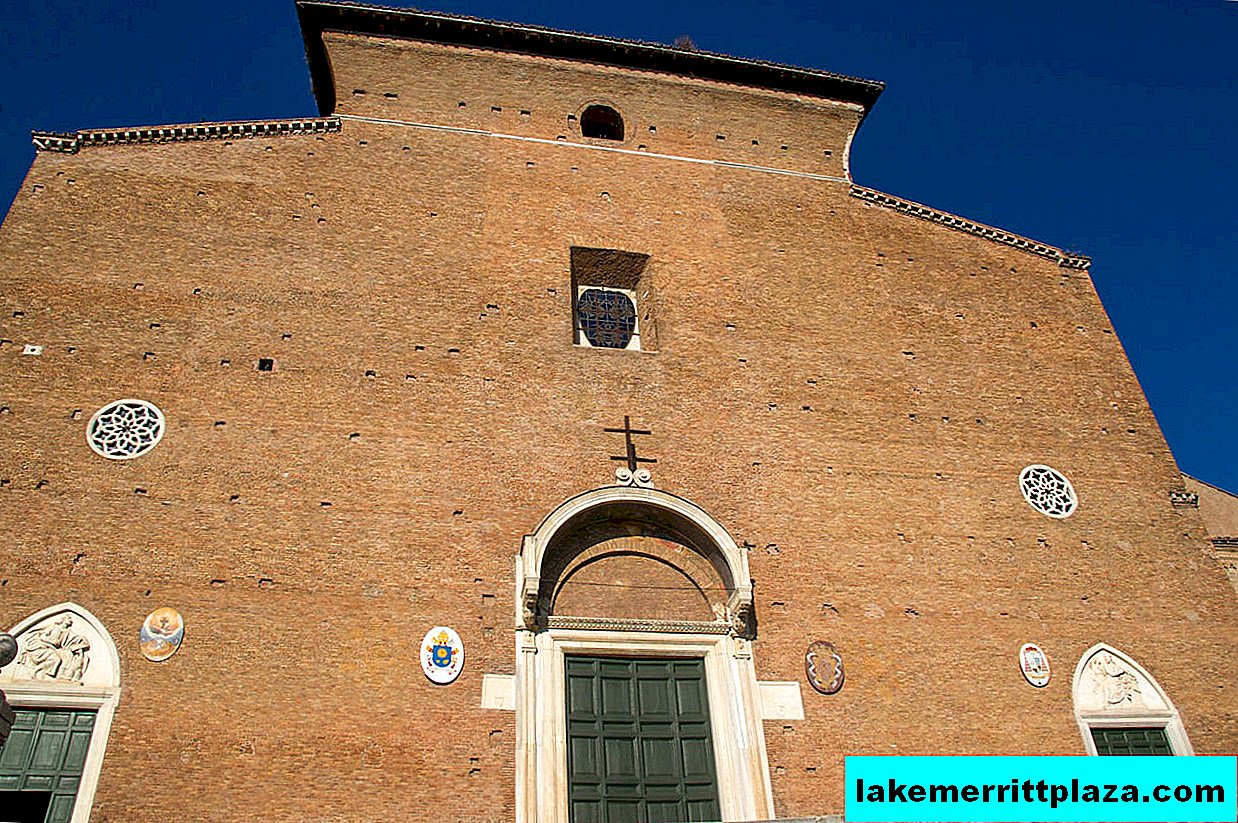
Main beetle
The main facade of the temple is built of burnt bricks, rose windows are cut into the wall of the building.
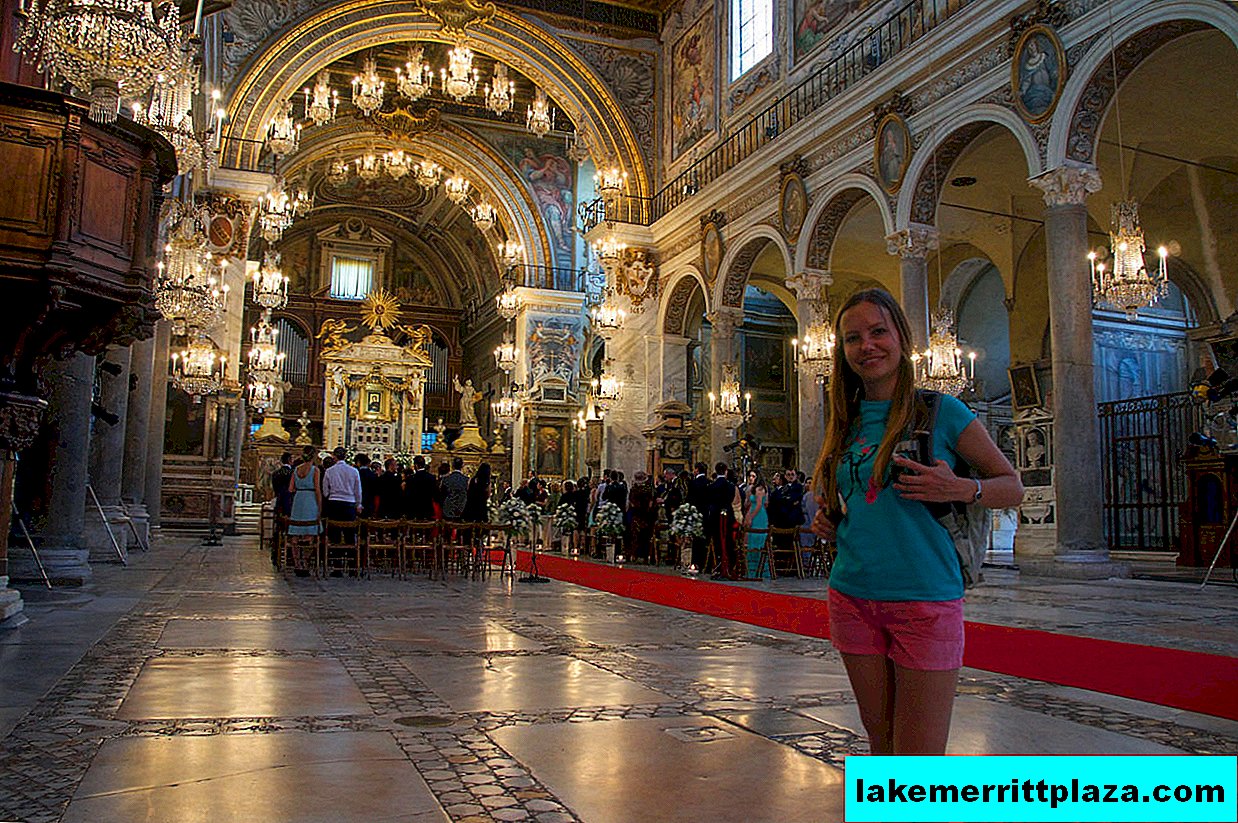
Central nave
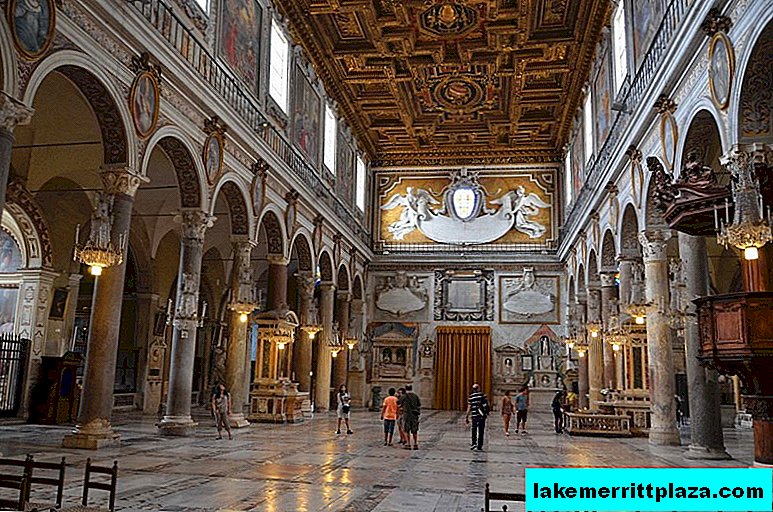
Nave on the other hand, photo by Richard Mortel
The church has three naves, separated by galleries of semicircular arches on ancient columns. Twenty-two columns were assembled from various ruined ancient Roman buildings.
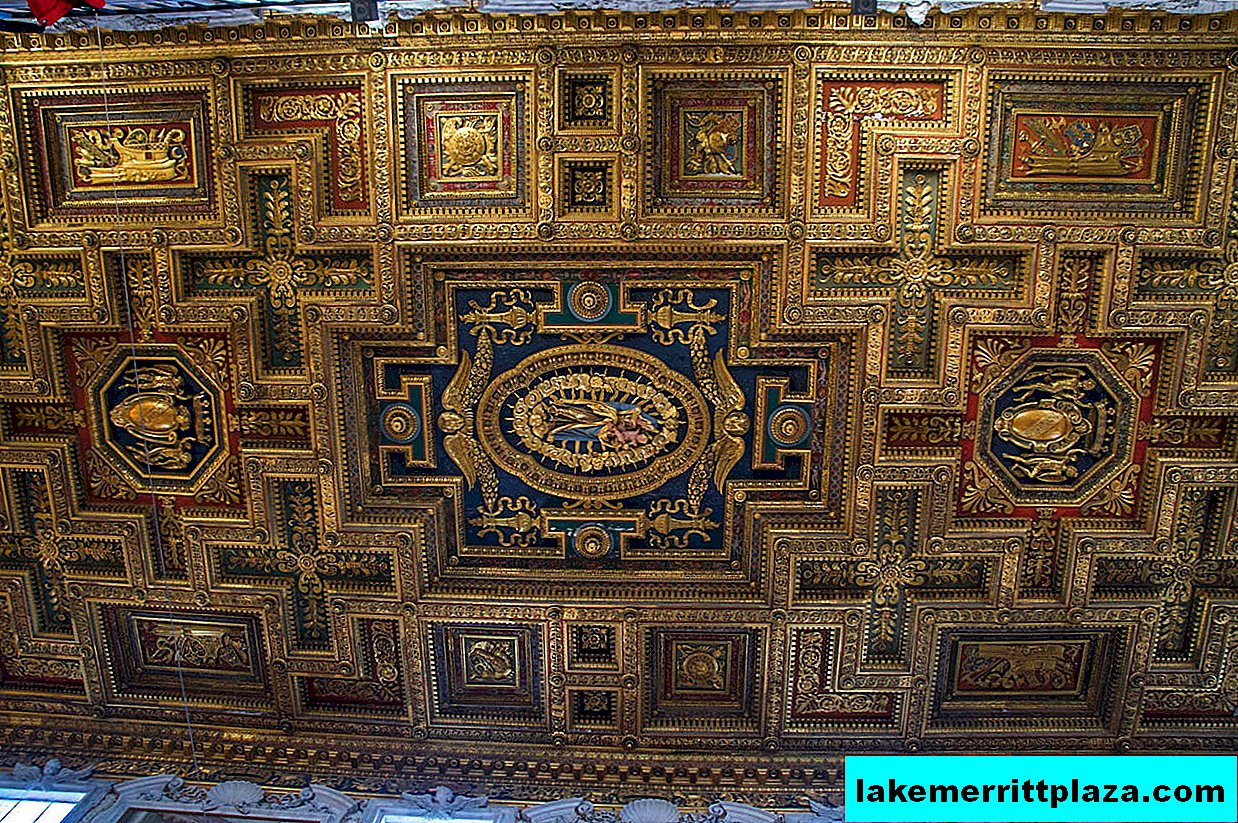
Caisson carved ceiling
The most striking element of the interior of the church is the caisson carved ceiling (XVI century), decorated with an allegorical image of the battle of Lepanto.
The marble floor of the basilica is made using cosmatesco technique. In the chapels of the temple you can see frescoes with the images of Saints Bernardine of Siena and Anthony of Padua, belonging to the brush of Pinturicchio, Pomarancho, Gozzoli.
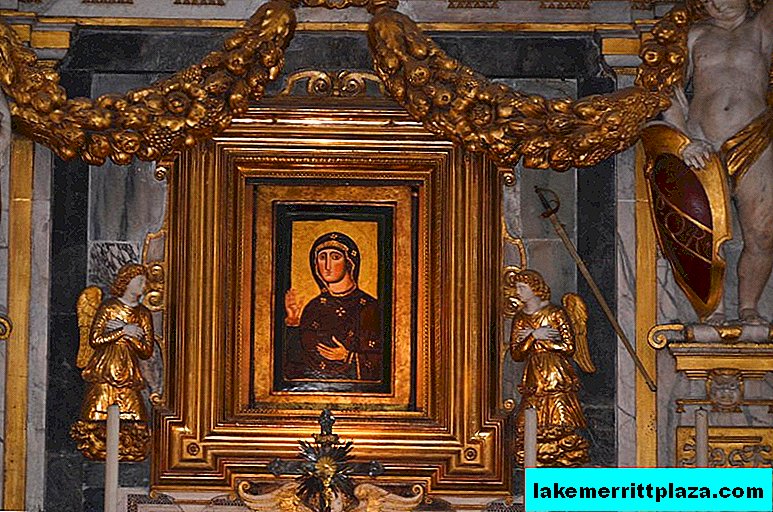
Icon of the Mother of God, photo by Richard Mortel
In the central altar is placed the icon of the Mother of God, painted by the Evangelist Luke. This image is considered miraculous. To the right of the main altar is a mosaic of the 13th century with the face of the Madonna.
Sculpture Baby Jesus
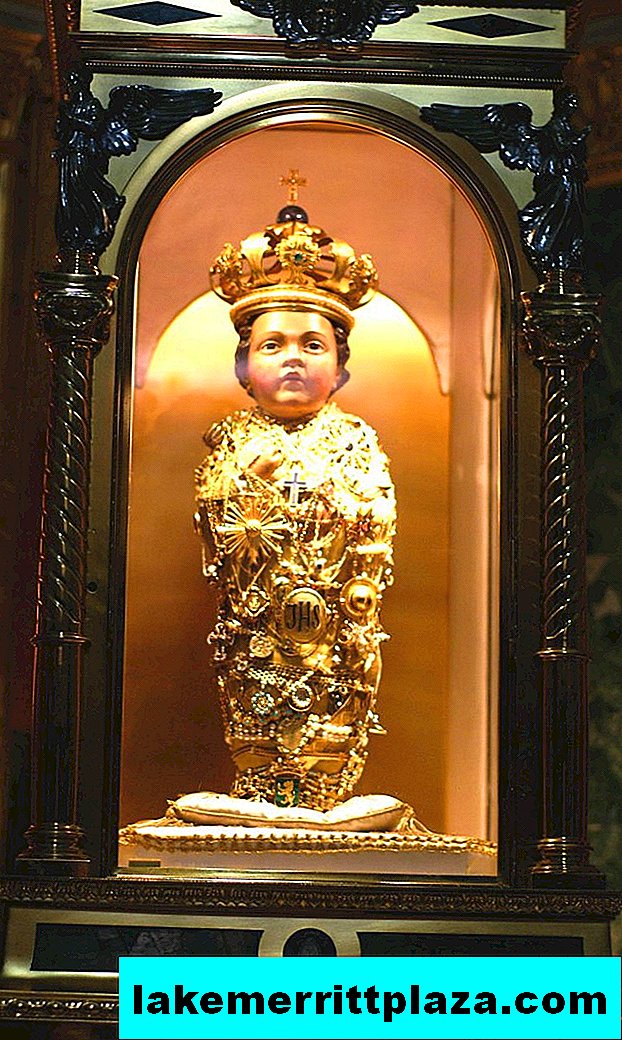
Wooden figure of Baby Jesus, photo by HEN-Magonza
In the left nave, in a separate chapel, the holy relic of the temple is kept - the figurine of the Baby Jesus (Santo Bambino). There is a legend that this small sculpture was carved from an olive tree grown in the Garden of Gethsemane (in the basilica there is a copy of the relic of the 15th century, and the original was stolen in 1994). The figure is considered miraculous - seriously ill patients often turn to it. There is a belief that if it is possible to heal a patient, the lips of a divine baby are red. When addressing the shrine of hopelessly sick lips, the figures of Jesus remain pale.
The legend of the construction of the temple
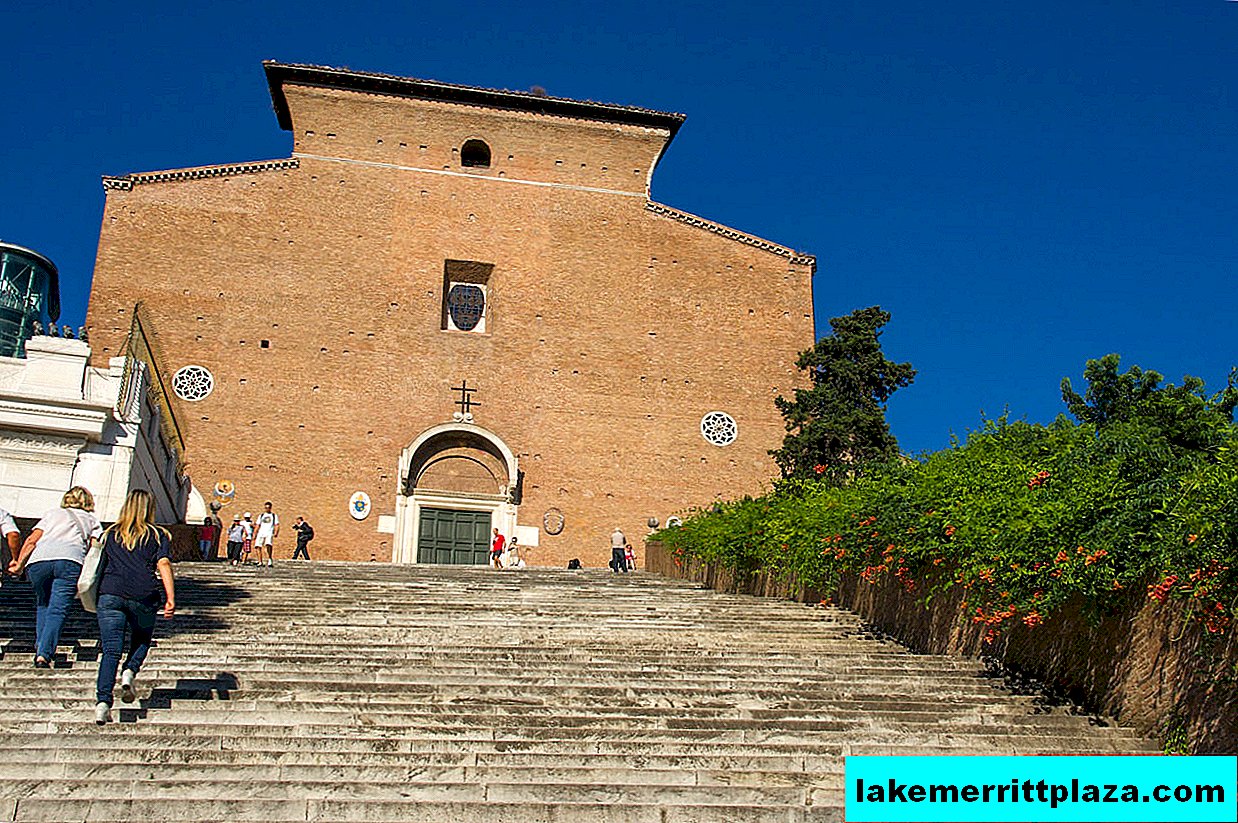
The Basilica and Staircase of Lorenzo Simone di Andreozzo leading to it
Legend has it that during the reign of Emperor Augustus, the inhabitants of Rome wanted to build a pagan temple in honor of their ruler. Augustus decided to find out whether such a structure is pleasing to the will of the gods. He went to the Capitol to sacrifice two pigeons. On the way to the emperor, the soothsayer-sybil met, who showed him a vision of the Holy Virgin with a baby radiating a divine radiance.
The emperor’s hands immediately weakened, he released the pigeons. Upon his return from the hill, Augustus forbade the construction of a pagan temple and ordered that an altar, the Altar of Heaven, be installed on the site of the divine appearance.
Today, on the site of the ancient altar is placed the aisle of St. Helena, which stores the relics of St. Helena of Constantinople. The temple also houses the tombs of Pope Honorius IV and Catherine the Queen of Bosnia.

The interior of the temple
How to get there
You can take metro line B to Colosseo Station;
by bus: 30, 51, 81, 83, 85, 87, 118, 160, 170, 628, 810 - to Ara Coeli-Piazza Venezia;
by tram 8 to the final stop of Venezia.

